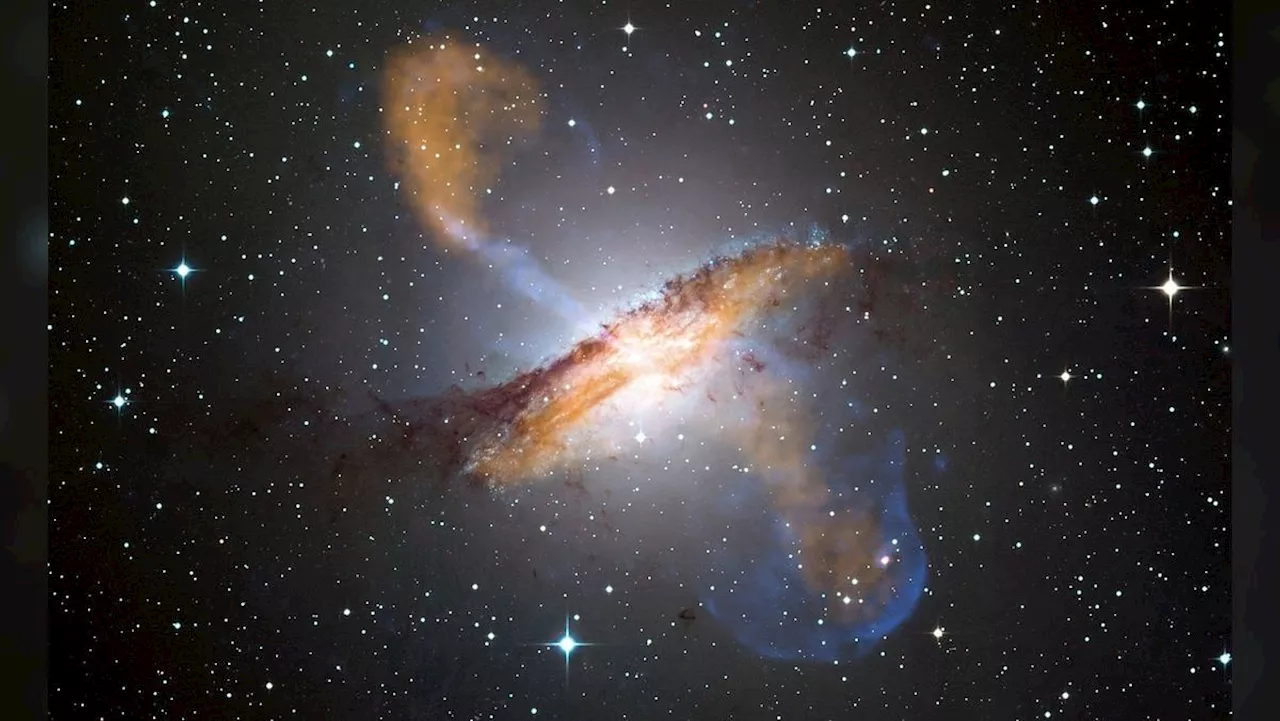Researchers have observed an unusual radiation signal from a pair of supermassive black holes devouring a massive gas cloud. The signal, repeating every 60-90 days, is unprecedented in active galactic nuclei and observed across X-rays, ultraviolet, and optical frequencies. This discovery offers new insights into the behavior of these cosmic giants and their interaction with galaxies.
Supermassive black holes — cosmic titans with masses of 100,000 to billions of times the mass of the sun — are among the universe's most fearsome phenomena. These celestial behemoths can consume entire stars and unleash torrents of powerful radiation visible across vast cosmic distances.
Examining the mysterious signalThe signal, designated AT 2021hdr, was first detected in March 2021 by the Zwicky Transient Facility, a powerful ground-based optical survey. It originated from a galaxy known as 2MASX J21240027+3409114, located approximately 1 billion light-years away, in the northern constellation Cygnus.
"We observed how the light of the system varies with time, for more than four years, using multiwavelength instrumentation," Hernández-García explained."The study includes observations with the Swift satellite , Zwicky Transient Facility , Very Long Baseline Array , and optical telescopes in Spain, Mexico and India."
Based on the simulation of the black holes' interaction with each other and with a gas cloud, the team found that the signal they studied fits well with the predictions of the computer model — if the supermassive black hole pair and gas cloud have particular properties. "We need to confirm the scenario that we are proposing, so we need to collect new data and perform simulations using these data in order to probe our hypothesis," Hernández-García said.
BLACK HOLES ASTRONOMY COSMOLOGY GALAXIES RADIATION
United States Latest News, United States Headlines
Similar News:You can also read news stories similar to this one that we have collected from other news sources.
 ‘Shallow Hal’ director takes credit for Gwyneth Paltrow’s unique baby name Apple — here's whyIt turns out that Gwyneth Paltrow’s unique baby name isn’t that unique after all.
‘Shallow Hal’ director takes credit for Gwyneth Paltrow’s unique baby name Apple — here's whyIt turns out that Gwyneth Paltrow’s unique baby name isn’t that unique after all.
Read more »
 Grad student discovers planet orbiting around nearby star, astronomers sayThe celestial body is the youngest transiting planet found to date.
Grad student discovers planet orbiting around nearby star, astronomers sayThe celestial body is the youngest transiting planet found to date.
Read more »
 Astronomers Take Remarkably Zoomed-In Image of Red Supergiant StarThe star offers hints at how huge stars shed gas and dim towards the ends of their lives.
Astronomers Take Remarkably Zoomed-In Image of Red Supergiant StarThe star offers hints at how huge stars shed gas and dim towards the ends of their lives.
Read more »
 UNC graduate student discovers planet orbiting around nearby star, astronomers sayThe celestial body is the youngest transiting planet found to date.
UNC graduate student discovers planet orbiting around nearby star, astronomers sayThe celestial body is the youngest transiting planet found to date.
Read more »
 Egg-shaped galaxies may be aligned to the black holes at their hearts, astronomers findI'm a theoretical cosmologist, using data to test fundamental theories about the Universe. I use large-scale galaxy surveys to test the Einstein's theory of General Relativity over the largest possible distances.
Egg-shaped galaxies may be aligned to the black holes at their hearts, astronomers findI'm a theoretical cosmologist, using data to test fundamental theories about the Universe. I use large-scale galaxy surveys to test the Einstein's theory of General Relativity over the largest possible distances.
Read more »
 Astronomers take the first close-up picture of a star outside our galaxyWhile astronomers have taken about two dozen zoomed-in images of stars in our galaxy, unveiling their properties, countless other stars dwell within other galaxies, so far away that observing even one of them in detail has been extremely challenging. Up until now.
Astronomers take the first close-up picture of a star outside our galaxyWhile astronomers have taken about two dozen zoomed-in images of stars in our galaxy, unveiling their properties, countless other stars dwell within other galaxies, so far away that observing even one of them in detail has been extremely challenging. Up until now.
Read more »
